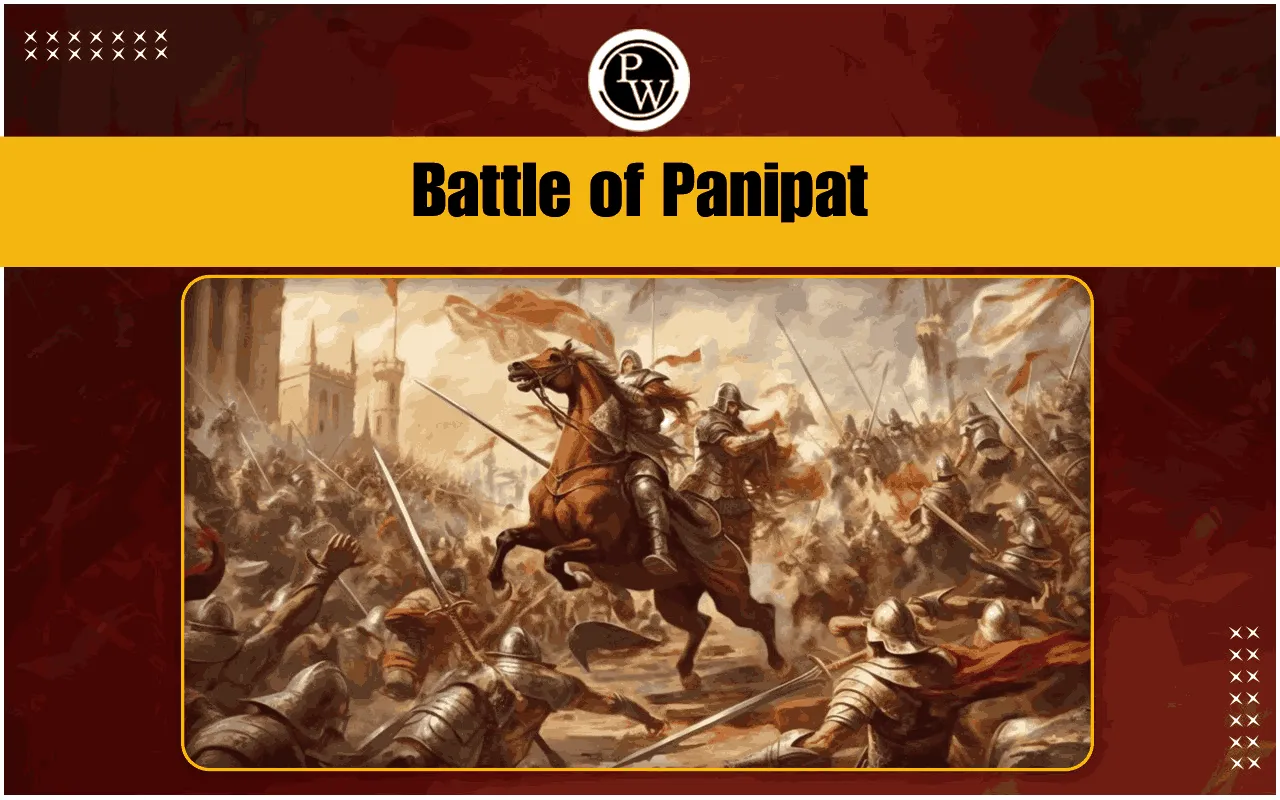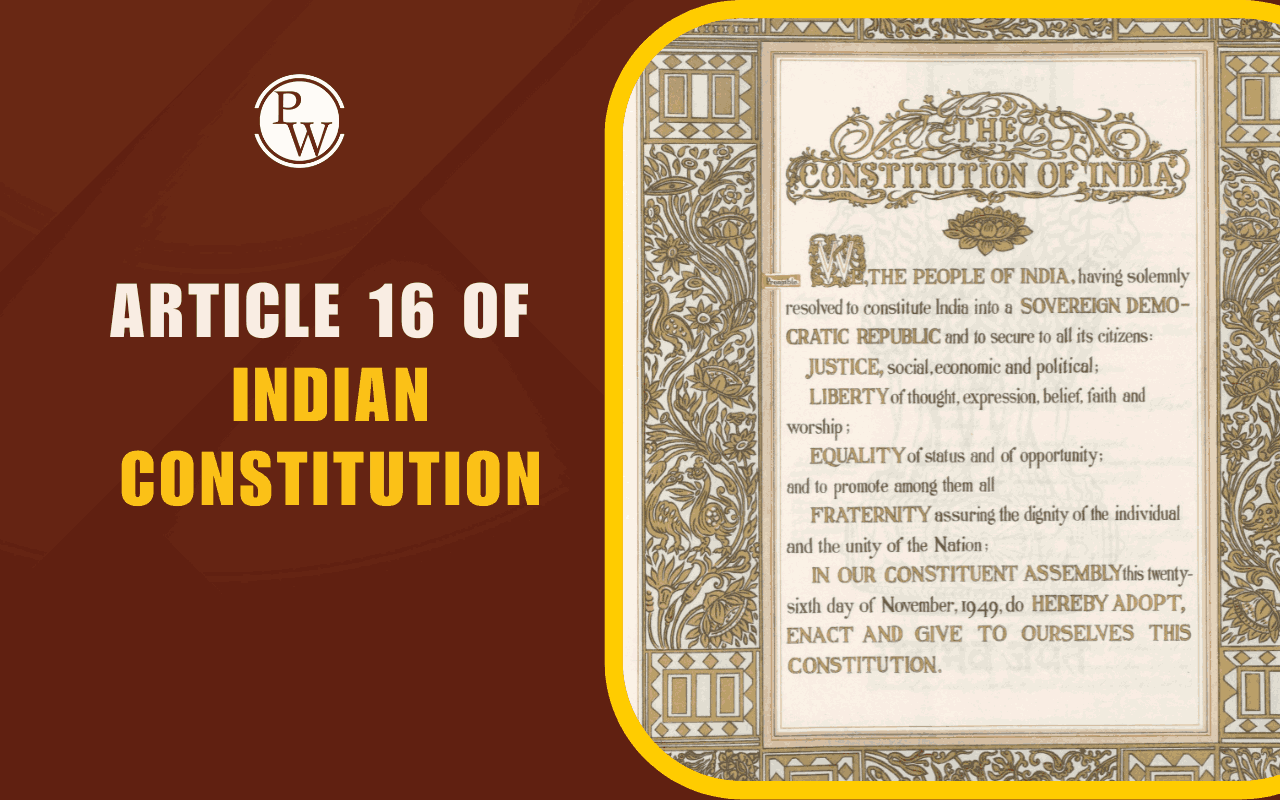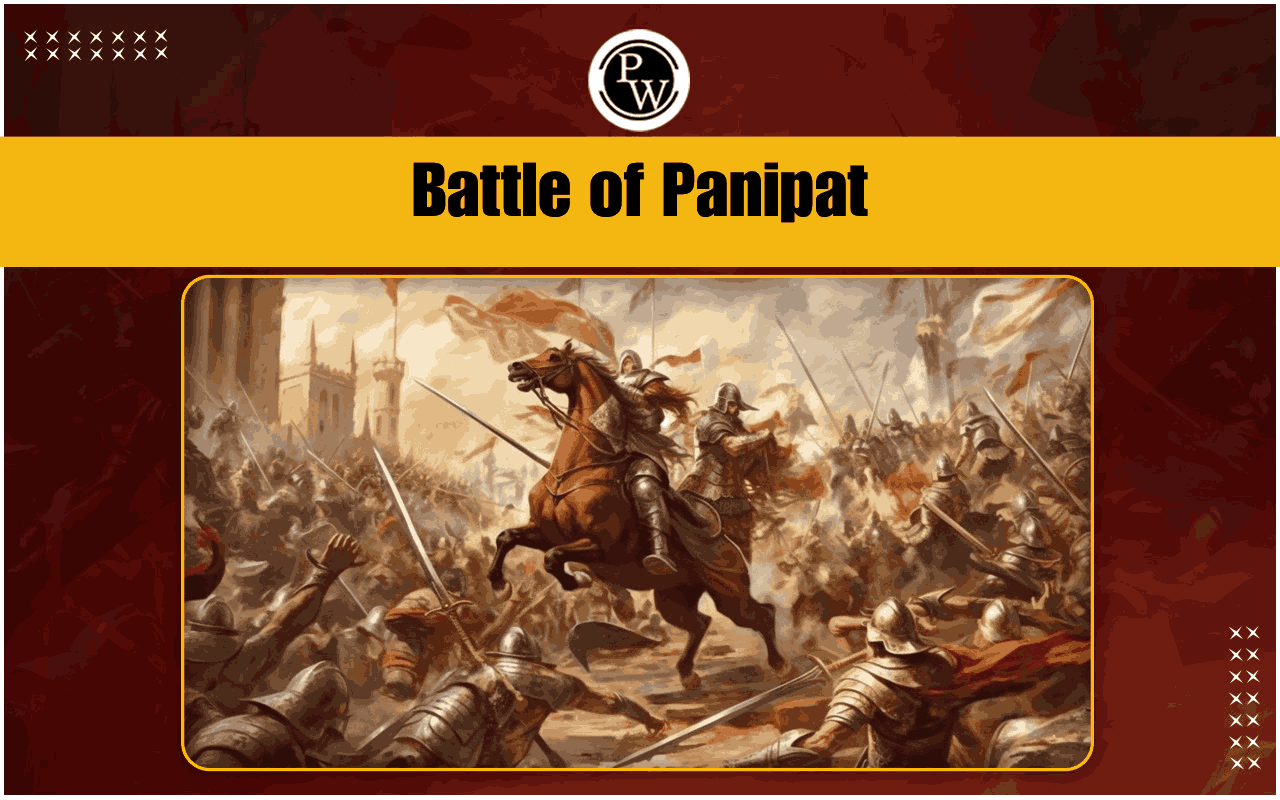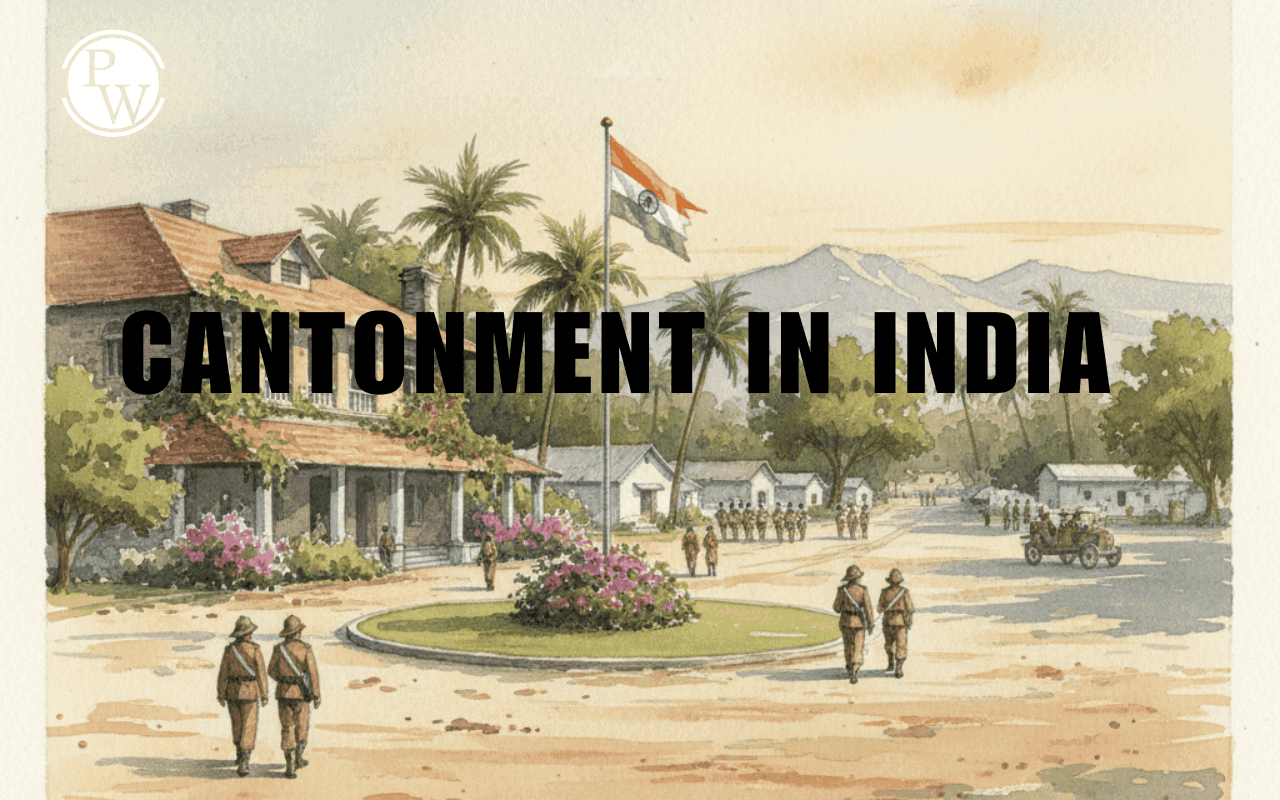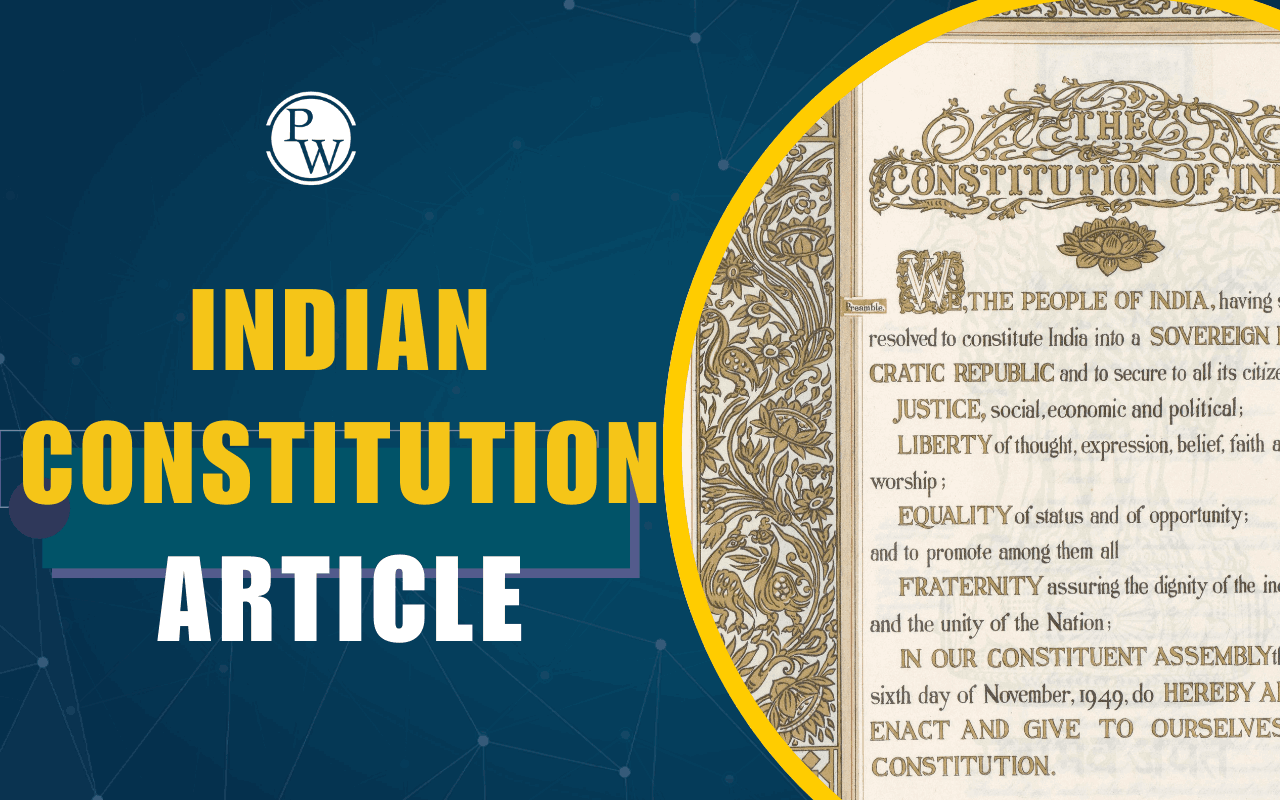
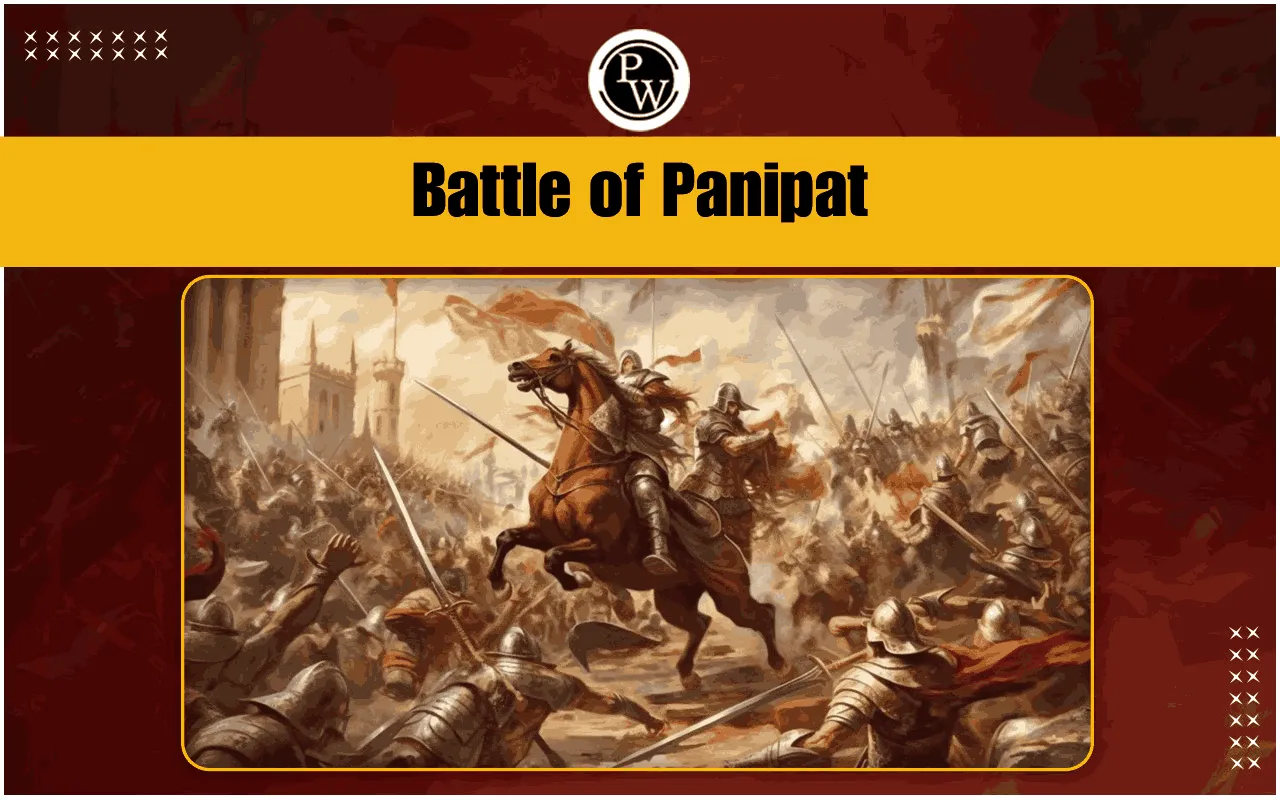
Battle of Panipat marks the turning point that shaped Indian History. They were fought in different centuries but at the same place—Panipat, in present-day Haryana. The first two battles of Panipat between rulers gave rise to and strengthened the Mughal Empire, while the third weakened Indian powers and paved the way for British rule.
Panipat became famous as the land where the fate of India was decided again and again. These battles are important topics for the UPSC Exam, both Prelims and Mains.
Battles of Panipat Overview
The name “Battle of Panipat” refers to not one but three different wars fought at different times—1526, 1556, and 1761. All of them took place near the town of Panipat, which is around 90 km from Delhi.
Panipat was chosen again and again because it was a flat plain, suitable for large armies with horses, elephants, and artillery. Its location was also important as it was the gateway to Delhi, the capital of many empires. Whoever won Panipat often controlled North India. The three battles were:
- First Battle of Panipat (1526) – Between Babur and Ibrahim Lodi.
- Second Battle of Panipat (1556) – Between Akbar’s forces and Hemu.
- Third Battle of Panipat (1761) – Between the Marathas and Ahmad Shah Abdali.
Battle of Panipat 1 (1526)
The First Battle of Panipat, fought on 21 April 1526, was a turning point in Indian history. It marked the beginning of the Mughal Empire in India.
- Before the battle, the Delhi Sultanate under Ibrahim Lodi was weak. Babur, a ruler from Central Asia, wanted to expand his power. He had already captured parts of Punjab and now aimed to take Delhi.
- Babur brought about 15,000 soldiers, equipped with modern artillery (cannons). Ibrahim Lodi, the Sultan of Delhi, had a huge army of more than 40,000 men and 1,000 war elephants. But Babur used clever strategies. He arranged his army in the Tulughma formation, dividing it into smaller units, and used cannons to scare the elephants.
- Ibrahim Lodi was killed on the battlefield, and his army was defeated. Babur became the new ruler of Delhi and laid the foundation of the Mughal Empire, which ruled India for the next 300 years.
Battle of Panipat 2 (1556)
The Battle of Panipat 2 was fought between the Mughals and Afghans led by Hemu. It was fought on 5 November 1556. This battle decided whether the Mughals would stay in India or lose their power.
- After Babur, his son Humayun ruled but lost much of his kingdom. He regained Delhi shortly before his death. His young son Akbar was only 13 years old when he became king. At the same time, Hemu, a strong Hindu general and Prime Minister under the Afghan king Adil Shah, captured Delhi and declared himself ruler.
- The Mughal army was led by Bairam Khan, Akbar’s guardian. Hemu had a strong army and almost won the battle. But during the fight, an arrow struck Hemu in the eye, and he was captured. Without their leader, his army lost courage and was defeated.
- Hemu was executed, and Akbar secured Delhi. This victory gave the Mughals a strong base in India. It also marked the beginning of Akbar’s long and successful reign, during which the Mughal Empire expanded greatly.
Battle of Panipat 3 (1761)
The Third Battle of Panipat was fought on 14 January 1761. It was one of the bloodiest battles in Indian history and marked the decline of Indian powers before the rise of the British.
- By the 18th century, the Mughal Empire had grown weak. The Marathas had become the most powerful group in India and wanted to control Delhi. But Ahmad Shah Abdali, the king of Afghanistan, invaded India to stop the Marathas and expand his power.
- The Maratha army was huge, led by Sadashiv Rao Bhau and supported by warriors like Vishwasrao. Ahmad Shah Abdali’s army was also very large and had allies from Indian kingdoms. The battle lasted for hours with heavy losses on both sides.
- The Marathas suffered a terrible defeat. More than one lakh soldiers and civilians died, making it one of the largest battles of the 18th century. After this, the Marathas weakened, and the British East India Company slowly rose to power in India.
Comparison of Battle of Panipat 1 2 3
Though fought at different times, the Battles of Panipat had common features. They were all decisive and changed the rulers of India. Panipat became known as the “graveyard of empires” because great armies often lost their strength here.
- First Battle (1526): Ended the Delhi Sultanate and started the Mughal Empire.
- Second Battle (1556): Saved the Mughal Empire when it was in danger.
- Third Battle (1761): Marked the decline of Indian powers and cleared the path for the British.
Causes of the Battles of Panipat
Each of the battles of Panipat was caused by struggles for power and control over Delhi. Delhi was the centre of power in the medieval Indian sub-continent. The causes behind the three battles of Panipat can be summarized as follows:
- Political Weakness: The fall of the Delhi Sultanate, weak Mughal rulers, and the decline of central authority created power struggles.
- Foreign Ambitions: Babur and Abdali invaded India because they wanted wealth and control.
- Internal Rivalries: Lack of unity among Indian rulers allowed outsiders to win easily.
- Strategic Location: Panipat’s flat land and closeness to Delhi made it the perfect battleground.
Impact of the Battles of Panipat on Indian History
The Battles of Panipat year had long-lasting effects on India. Each of the battles was a challenge to the central power of the Indian sub-continent. The impact of the Battles of Panipat on Indian History can be summarized as follows:
- Change of Rulers: Each battle replaced one major power with another.
- Rise of the Mughals: The first and second battles made the Mughals powerful.
- Decline of the Marathas: The third battle weakened the Marathas, paving the way for British expansion.
- Shift in Warfare: The use of cannons, firearms, and new formations changed Indian warfare forever.
- Political Fragmentation: Repeated battles weakened unity, making India vulnerable to future invasions.
Battle of Panipat UPSC
For students preparing for exams like UPSC, the Battles of Panipat are very important. Questions are often asked in both Prelims and Mains. Studying these battles helps understand how empires rose and fell, and why foreign powers like the British later became dominant in India.
- Prelims: Questions may focus on the year, main rulers, and outcomes of the battles.
- Mains: Questions may ask about the historical importance, causes, or impact of the Panipat battles.
Battles of Panipat FAQs
Why is the Battle of Panipat considered a turning point in Indian history?
Who fought in the First Battle of Panipat, and what was its result?
What happened in the Second Battle of Panipat (1556)?
Why is the Third Battle of Panipat (1761) famous?
Why was Panipat chosen repeatedly as the battlefield?

UPSC Coaching
